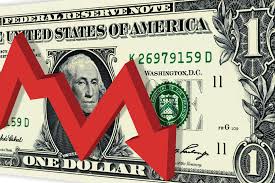The US dollar’s downward spiral has been a pressing concern globally, impacting various countries and their economic outlooks. Several factors contribute to this decline, including the Federal Reserve’s dovish stance, which hints at potential interest rate cuts, making the dollar less attractive to investors. Additionally, trade tensions, such as the US-China trade deal, and softer US inflation data have fueled speculation about a prolonged dollar downtrend.
As the dollar weakens, it can lead to both positive and negative outcomes. Countries heavily reliant on exports may see a boost in competitiveness in global markets, potentially stimulating economic growth. Conversely, countries with high levels of dollar-denominated debt may face increased financial risks and higher servicing costs. This decline can influence global trade imbalances and affect investment.
The dollar’s downward trend is also attributed to the US twin deficits, with investors wagering on a global economic recovery that would suck money into riskier assets. Furthermore, hyperinflation and political instability can contribute to currency devaluation, characterized by rapid price increases, economic turmoil, and volatile exchange rates.
Experts recommend reducing dependency on the US dollar, advising individuals to be their own bankers and central bankers, eliminating financial institutions between them and their wealth. The future of the dollar may hinge on evolving its dominance to meet the demands of a more fractured, multipolar world, potentially leading to a bifurcated currency order
source-BusinessDaily










